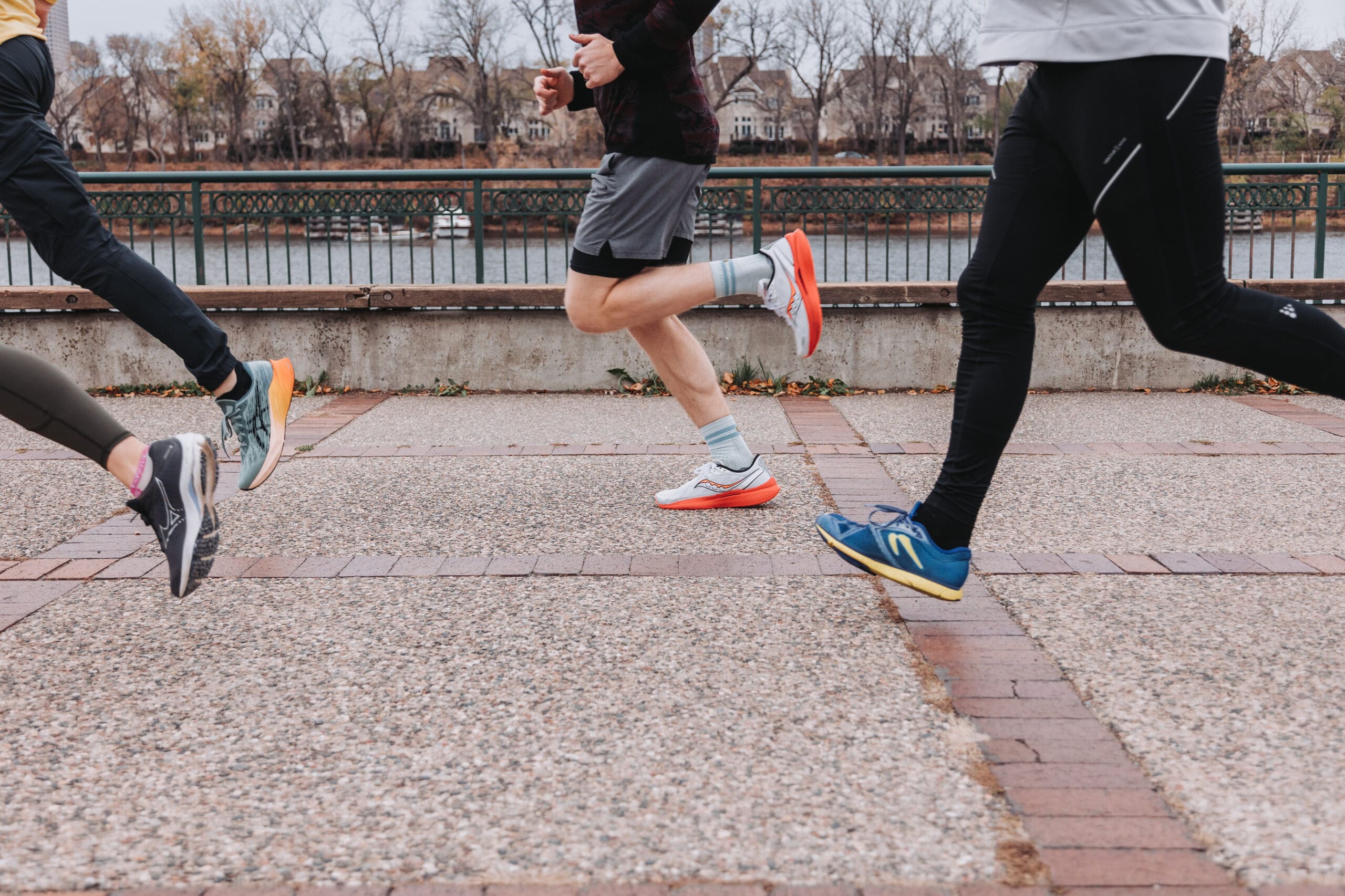
Stronger Shins, Stronger Runs | How I Help Runners Beat Shin Splints
September 4, 2025
Date
Category
One of the very first ways my partner, Kailee Carlson, and I connected was through her struggles with shin splints. At the time, she was dealing with constant pain that made running frustrating and inconsistent. Together, we started working on many of the exact things I am going to share in this blog; strength work, gait adjustments, and smarter training. Over time, she built durability and confidence, and now shin splints are no longer part of her running story.
That experience is one of the reasons I am so passionate about helping runners understand and address shin splints. They are common, but they do not have to define your running journey.
At Oak Endurance, I coach endurance athletes through strength training for runners, gait work, and recovery strategies designed for injury mitigation and performance. Whether you are part of our Minnesota run coaching community or following along virtually, this guide will help you understand what is happening and what to do about it.
Before you continue reading, please know that I am not a medical doctor. The information in this blog is based on my coaching experience and is meant to provide general education and recommendations for runners. Much of what I share comes from questions I frequently get from clients, and my goal here is to provide a simple guide that anyone can learn from.
This is not meant to be a tailored or individualized program, nor should it replace professional medical advice, diagnosis, or treatment. If you are experiencing persistent or severe pain — especially the kind that does not improve with rest or feels sharp and localized — please consult with a qualified healthcare provider to rule out stress fractures or other medical concerns.
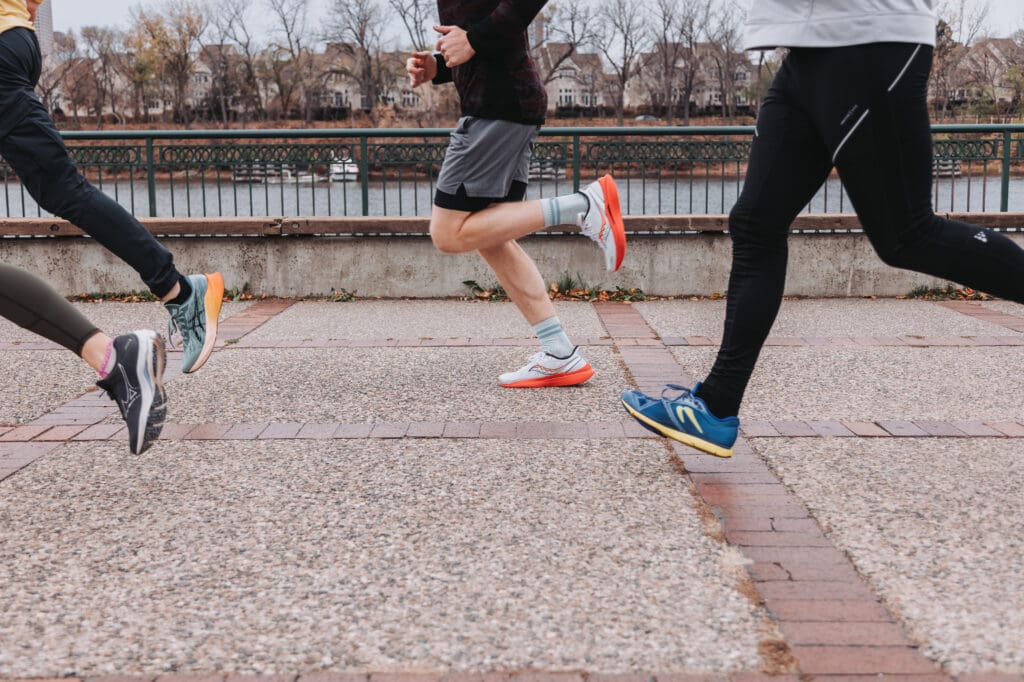
What Are Shin Splints?
“Shin splints” is a general term that refers to pain along the shinbone caused by repetitive stress on the lower leg. The medical name is medial tibial stress syndrome (MTSS), but not all shin splints look the same.
Medial shin splints: Pain on the inner edge of the shinbone, most common in runners, often linked to overpronation or weak hip stability.
Anterior shin splints: Pain on the front of the shin, usually involving the tibialis anterior muscle. Often caused by rapid increases in downhill running, speed work, or poor footwear support.
Posterior tibial shin splints: Caused by overuse of the posterior tibialis muscle, which helps control pronation. Technically, these are different from medial shin splints, but in practice I usually see them present the same way, so for simplicity I will be talking about them together here.
Why Do Runners Get Shin Splints?
Several factors can contribute:
• Training errors such as suddenly increasing mileage or intensity
• Worn out or inappropriate footwear
• Weak calves, hips, or core
• Hard or uneven running surfaces
• Biomechanical inefficiencies such as overpronation or limited ankle mobility
This is where 3D gait analysis is so powerful. It shows exactly how your stride may be increasing stress on the lower leg, so we can make targeted adjustments in training.

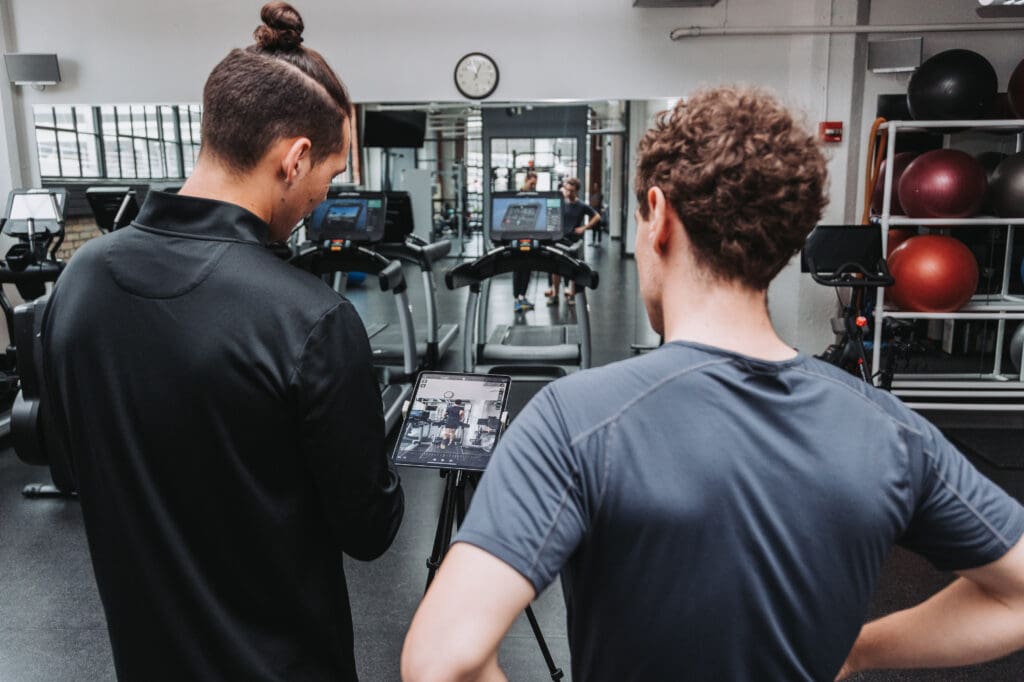
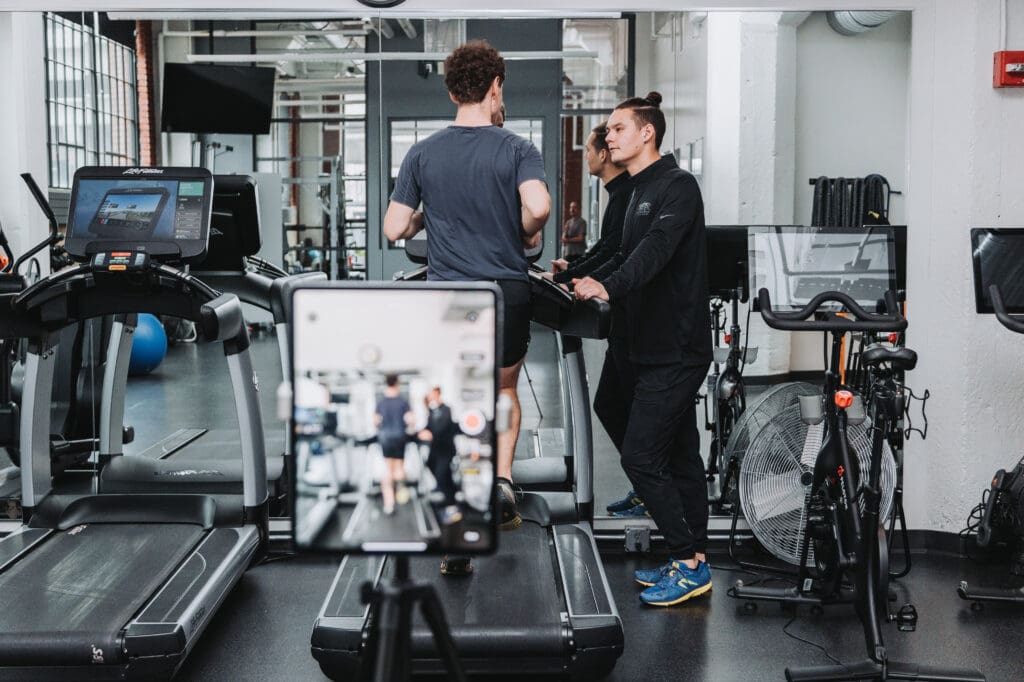
Symptoms to Watch For
• Pain along the shinbone during or after runs
• Tenderness when pressing the shin
• Swelling in the lower leg
• A dull ache that can progress to sharp pain
⚠️ Important: Shin splints can sometimes mask something more serious, such as a stress fracture. If your pain is sharp, localized to one spot, or persists even at rest, you should see a doctor. Stress fractures require medical attention and rest. Continuing to run through them can lead to serious setbacks.
Running Form Tips That Can Reduce Shin Splints
Your gait plays a huge role in shin stress. Small adjustments often make a big difference. Here are some tips I coach runners on:
• Run with a slightly higher cadence (think quicker, lighter steps)
• Land with your foot under your hips rather than reaching out in front
• Focus on quick, short steps rather than long overstrides
• Avoid harsh heel striking or overly aggressive mid foot slapping. Aim for a smooth, controlled landing
How to Treat Shin Splints
If you are feeling pain:
- Reduce load: Scale back mileage and intensity
- Ice and compression: Manage inflammation and soreness
- Strength training for runners: Calf raises, toe raises, single leg balance, hip and core work
- Cross train: Cycling, pool running, or elliptical to maintain fitness
- Evaluate shoes: Make sure your footwear supports your gait and is not past its mileage
My Go To Exercises for Shin Splints
For Medial Shin Splints
These are my three go to exercises that I use most often for medial shin splints.
Banded Ankle Inversion (Post Tib)
Rotational Heel Raise
Balance/Mobo Board Work
*Typically, this type of shin split is due to issues with the posterior tibialis muscle (responsible for arch stability/control of the foot and very blown out on most runners). So in the exercises above be very conscious of doming your foot when applicable.
For Anterior Shin Splints
These are my three go to exercises that I use most often for anterior shin splints.
Anterior Tibialis Wall Raises
Partner Shin Strength (likely my all time favorite exercise for helping someone with shin splints)
Shin Windshield Wipers
Preventing Shin Splints Long Term
• Progress mileage gradually
• Rotate shoes and replace them before they wear down
• Build a foundation with single leg exercises, balance work, foot training, Mobo board work, and hip strength. If you are unsure of what to do, consider working with a professional who can guide you safely
• Warm up with drills like skips and marches
• Use gait analysis to identify and address biomechanical inefficiencies
• Stability shoes can be a great tool to aid runners, but are not a long term solution as they have the post tibialis muscle work less and less over time. I’d highly recommend strengthening the foot instead of using a stability shoe long term
Final Thoughts
Shin splints are common, but they do not have to derail your running. By understanding the different types, adjusting your gait, and strengthening the right muscles, you can keep training safely. And if pain persists, always rule out a stress fracture with a doctor.
At Oak Endurance, I help endurance athletes build durability, confidence, and longevity in their running. Whether you are recovering from shin splints or looking to prevent them, the right mix of strength training for runners, smart programming, and 3D gait analysis can make all the difference.
Check out our coaching services, including Minnesota run coaching, in-person strength options and virtual programs for athletes everywhere.
Blog Post written by Jacob Oak | personal trainer, run coach, and gait analyst that works with endurance athletes through Oak Endurance
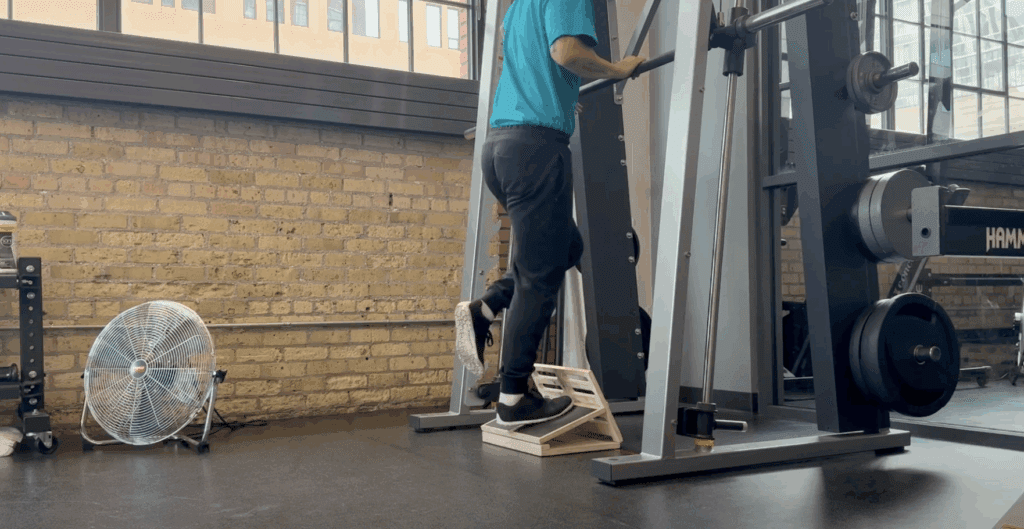
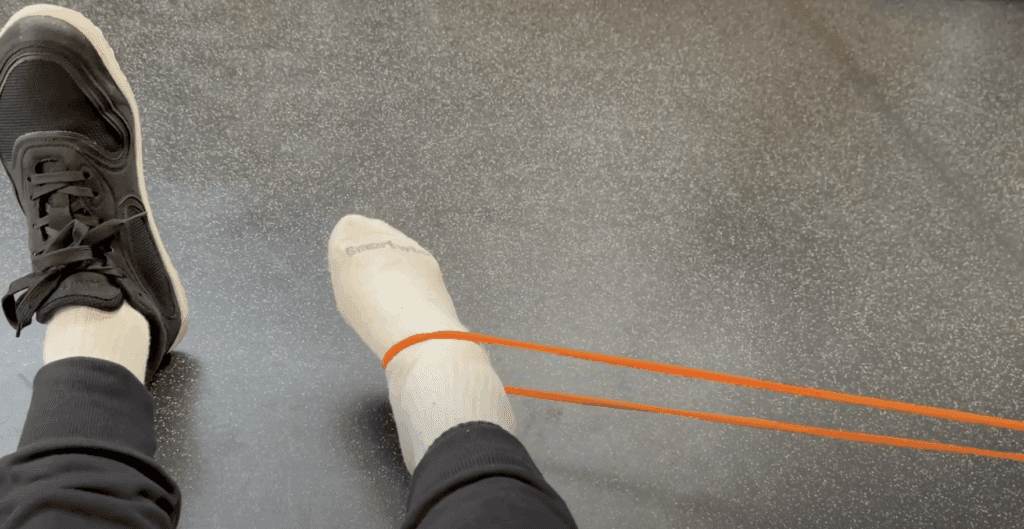
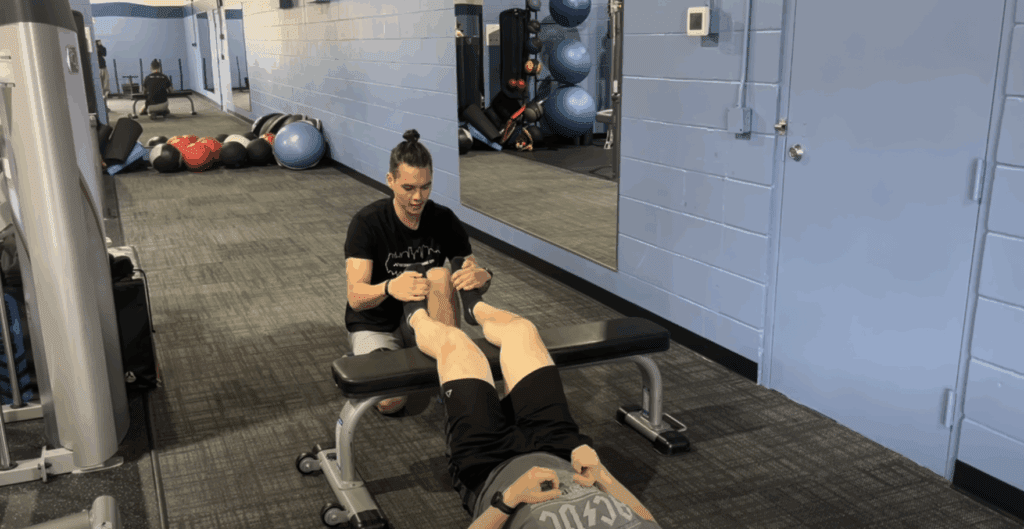
close X